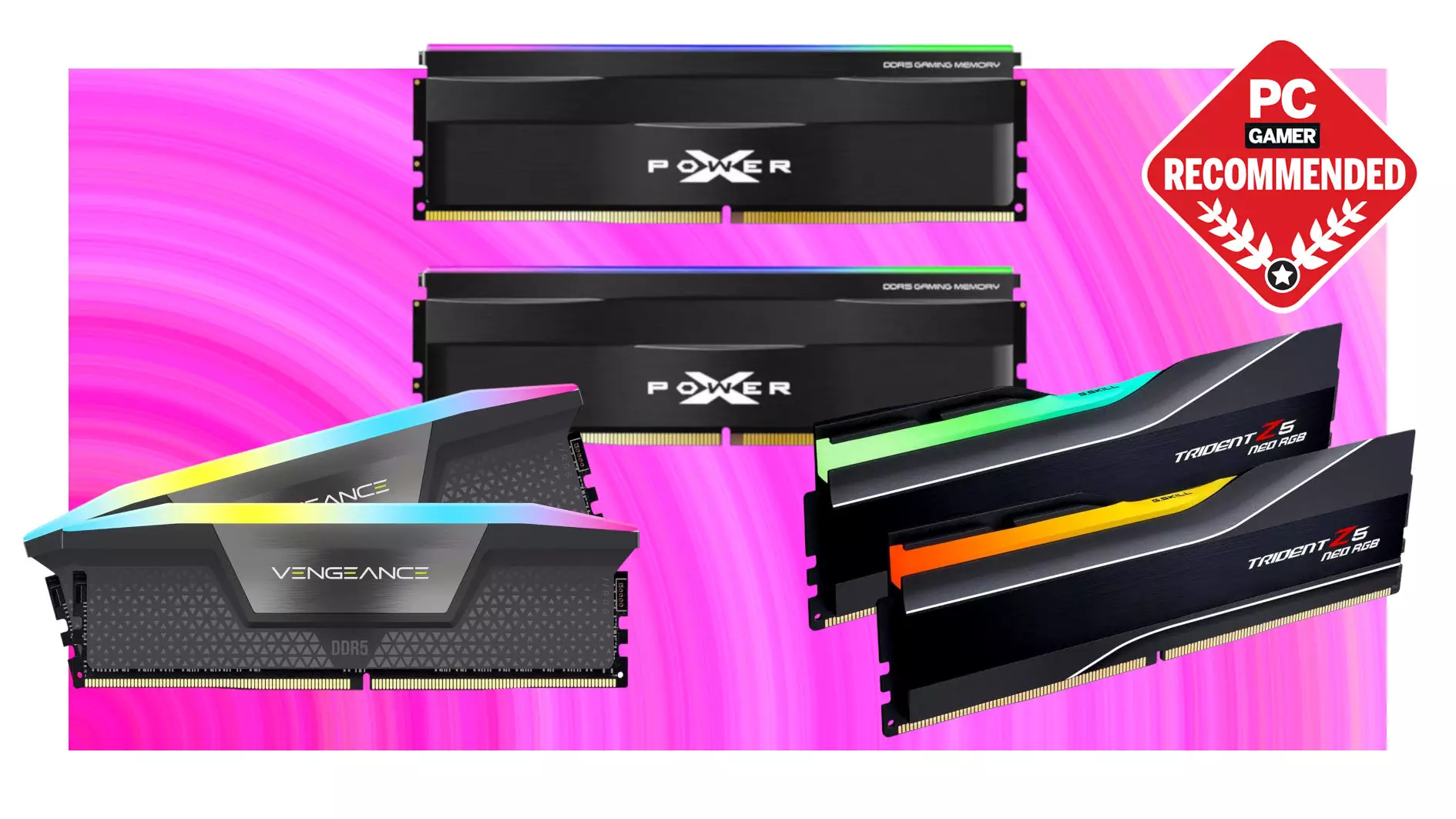For years, the mainstream understanding in the PC gaming community has been that 16GB to 32GB of RAM suffices for most gaming experiences, with higher capacities often dismissed as unnecessary or extravagantly expensive. However, this perspective is increasingly outdated as the demands of modern and future titles evolve. While it’s true that standard gaming workloads rarely require more than 32GB of RAM, exceptions like highly detailed simulations and future-proofing considerations suggest that dedicated enthusiasts should consider pushing beyond these limits. Notably, Flight Simulator 2024 vividly exemplifies this trend, where 64GB of RAM becomes less of a luxury and more of a necessity, providing stability and performance margins that 32GB simply cannot match.
This reevaluation underscores a broader truth: the boundaries between high-end and mainstream hardware are blurring. With advances in RAM technology and decreasing prices for high-capacity modules, the idea that more RAM equates to wasted investment is becoming less tenable. Instead, sophisticated titles and multitasking environments—streaming, encoding, and gaming simultaneously—demand more robust memory configurations. The key takeaway is that today’s gaming PCs benefit immensely from higher RAM capacities, especially when tackling demanding applications that push the limits of your system’s resources.
Debunking Myths About Cost and Compatibility
One common misconception about upgrading to 64GB DDR5 RAM is the fear of exorbitant costs and potential stability issues caused by multi-stick configurations. Fortunately, these concerns are largely unfounded in the current landscape. Modern DDR5 modules are designed with stability in mind, and using two sticks—rather than four or more—can avoid most common compatibility pitfalls. Thanks to recent technological improvements and mature motherboard firmware, pairing high-capacity RAM kits with your system no longer results in instability or trouble.
In fact, today’s market offers remarkable value. For the price of a pair of high-quality 32GB modules, you can acquire a single 64GB DDR5 kit, often at competitive or even lower prices. This consolidation reduces complexity, frees up slots for future upgrades, and minimizes potential conflicts. Budget considerations are also more manageable when opting for these high-capacity kits, especially since the price difference in high-performance RAM has narrowed significantly. The consumer no longer has to choose between cost and future-proofing; the two can coexist comfortably.
The Importance of Timing and Compatibility
When selecting 64GB DDR5 RAM, not all modules are created equal. Variations in timings, specifically CAS latency—an indicator of how quickly memory responds—have meaningful impacts on performance. For example, a kit with lower latencies (like CAS 30) will generally deliver snappier response times, which can be beneficial in gaming scenarios where milliseconds matter. However, these lower latency kits often come from less familiar brands or may require delicate tuning to achieve stability.
Recognizing this, reputable brands like Silicon Power and G.Skill have made a name for themselves by offering reliable, well-tested modules across a spectrum of timings. Silicon Power’s 64GB DDR5 kit with a CAS of 30, for example, promises superior performance but may need careful compatibility checks. Conversely, G.Skill’s kits with CAS 36 are designed with broad compatibility in mind, providing a more forgiving experience across diverse gaming rigs. The key is to verify your motherboard’s Qualified Vendors List (QVL) and consult manufacturer forums or support lines to ensure that your chosen kit will synergize seamlessly with your system.
Balancing Performance and Aesthetics
A tactical consideration when selecting RAM modules revolves around both performance and aesthetics. While lower latency kits theoretically offer better responsiveness, their physical design and visual style also matter to many enthusiasts. Modules like Silicon Power or G.Skill’s Trident Z5 Neo feature sleek, understated aesthetics with options in black or white, allowing for builds that look as good as they perform. RGB lighting, while not a primary concern, can influence choices, especially for builders who want their rig to stand out.
Importantly, the perceived performance gains from higher-tier, lower-latency modules can be marginal in real-world gaming scenarios—particularly if you focus on GPU-intensive titles or resolutions such as 4K. The real value lies in future-proofing and multitasking ability. For example, if your workflow involves streaming or rendering in the background while gaming, the extra memory headroom will shine. For pure gaming performance, especially at high framerates and high resolutions, the benefits of premium timings are less palpable, making the decision more about aesthetic preference and system compatibility.
Long-Term Investment and Upgrade Strategy
Investing in 64GB DDR5 RAM is undoubtedly a statement of intent—asserting that you prioritize longevity and versatility over short-term savings. When paired with a compatible high-performance motherboard and CPU, these modules are capable of supporting your system through multiple hardware generations. This is especially true in the context of upcoming AAA titles and increasingly complex simulation environments, which are becoming more resource-intensive.
Furthermore, choosing the right RAM kit involves strategic planning. By opting for a model that balances latency, capacity, and aesthetics, you establish a robust foundation that minimizes the need for future upgrades. Compatible, high-quality RAM can serve as a vital component that sustains your system’s productivity and gaming capabilities for years, even as software demands grow. In this light, spending a bit extra on premium 64GB DDR5 RAM becomes an investment in stability, performance, and peace of mind—ensuring your gaming rig remains relevant and capable in the face of relentless technological advancement.

